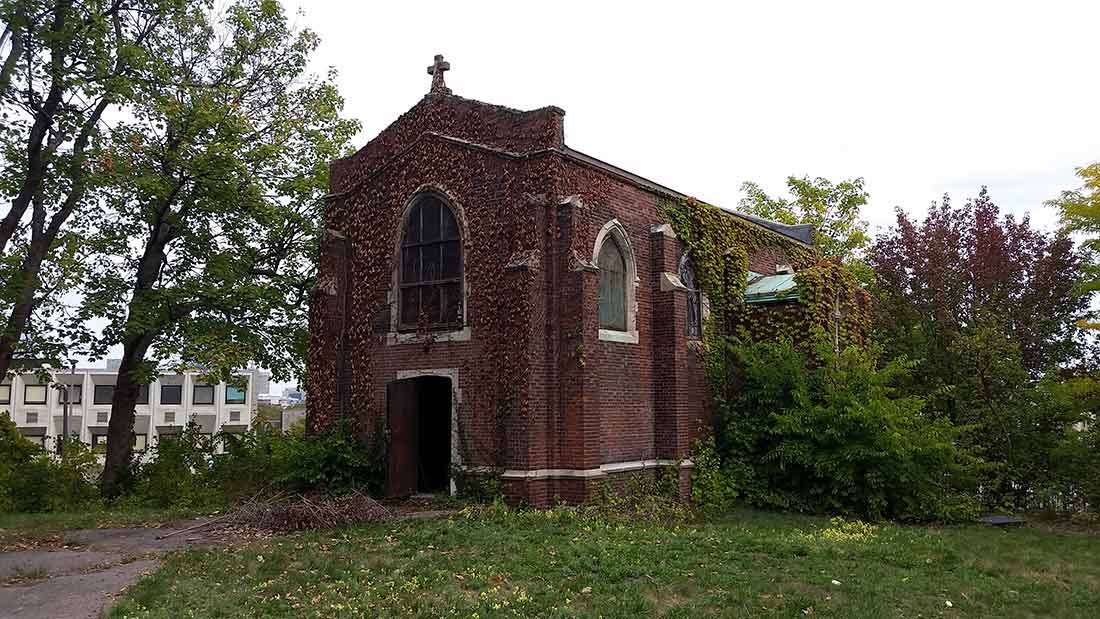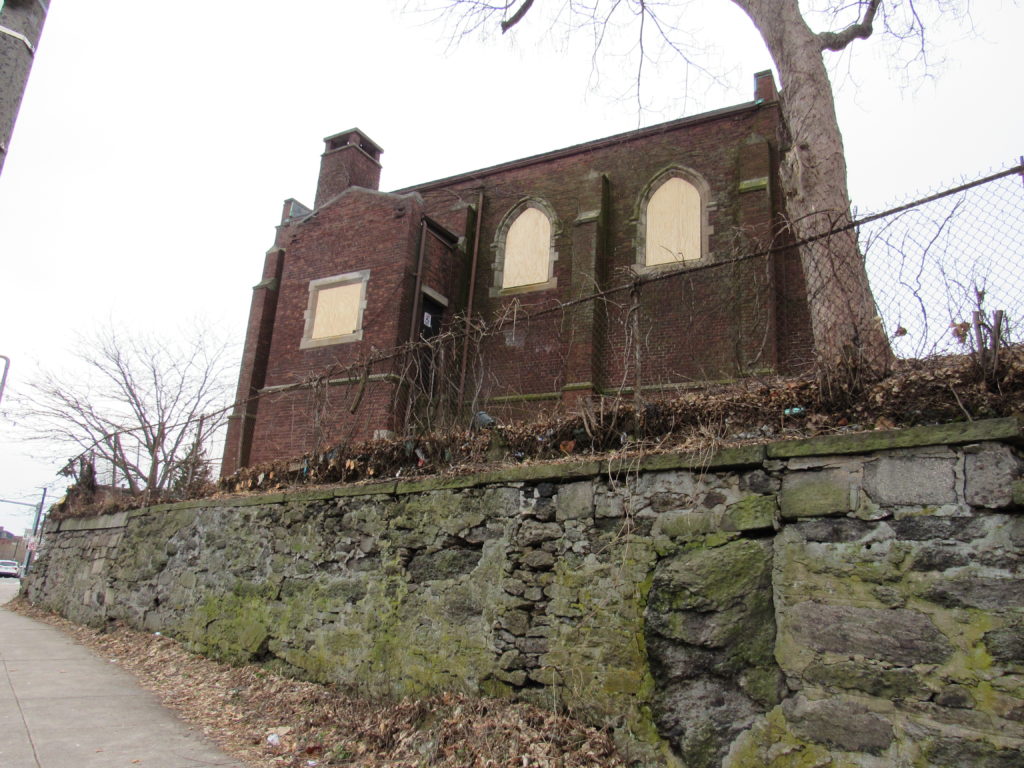
21 Dec 2020 Preservationists in Conversation: Lynne Spencer and Curtis Perrin discuss the preservation of St. Luke’s Chapel
St. Luke’s chapel was designed by architect Ralph Adams Cram, a famed architect who popularized the Gothic style in American churches and collegiate campus architecture. Under the direction of the Episcopal Diocese of Massachusetts, HBI has worked as consultants to Spencer, Sullivan, & Vogt to document the existing conditions and create options for preservation and rehabilitation, including the potential for shared space with other church-sponsored programming and services. Read a conversation between preservationists, Lynne Spencer and Curtis Perrin about the project and the building’s significance to the neighborhood.
LYNNE: If I asked you to describe what’s most important about St. Luke’s, what would you say?
CURTIS: I’d say it’s dialogue, like what we are doing right now. I’m almost tempted to say architecture is dialogue.
LYNNE: If only more architects saw it that way! I agree with you that it’s about putting things in communication, like how a building pulls together so many people to design it, build it, use it, even love it.
CURTIS: I agree. Any building has all these parts, like the construction, the materials, the creativity in it, the space, the function, how it holds the light, and often emotions. All of these things are speaking to one another in dialogue. You could also say that buildings are in communication with other buildings, with the city overall, and how they fit together is a dialogue. It’s always more than just the intention of the architect who did the original design.
LYNNE: Each building is lending its voice to the overall conversation, and each one is also the place to bring many voices together. Some buildings even provoke a response. Communities respond to them, maybe to make another point, or a counterpoint. I think this is part of what has made St. Luke’s so interesting, that it was crying out for a long time and nobody could figure out the right response, but a dialogue emerged when you introduced HBI to this building that has grown and grown, now including our architecture firm, the diocese, and many, many members of the community.
CURTIS: Yes, it’s amazing how those early encounters led to where things are now. I think this is what makes our work as preservationists more interesting. We are never in a situation where we can take credit for an entire project because we are always working on something that already exists, someone else’s work, and even the work in the present is always shared in ways that make it impossible for any one person to take credit. It’s humbling – in a good way!

LYNNE: Maybe that brings us back to the dialogue issue, which has been really strong in how things are proceeding at St. Luke’s. Knowing the value of this building to the community has made it imperative that every step along the way be generated out of a wider dialogue that is talking with many people – with the hope that with these voices exploring and relating together opens the transforming moves ahead. Already the community meetings, and the meetings with the congregation and the diocese, have had a significant impact.
CURTIS: It’s so important that this be an active dialogue. Dialogue that is connected to people’s actual hopes and fears in the moment. The trick is to find the clear intentions emerging. They can get lost when there are many voices saying things in different ways. I think a key to not losing the intentions is turning those words into actions, clear objectives.
LYNNE: That gets lost if there is too much focus on the parts at the expense of the whole – I’ve seen simple projects derailed because the vision, the whole, never came into a focus. People get focused on a detail, a handrail, or squabbles come up over who gets to do what, or who is taking charge, or who is taking credit.
CURTIS: If there isn’t a true focus emerging, it runs the risk of becoming just conversation, whereas dialogue is dynamic, like action is dynamic. The key is to find that dynamic action coming from the community and help guide it to become objectives for a project that can be group expression.
LYNNE: The dialogue builds architecture, and the architecture builds more dialogue. At some point it whispers, then clearer, and there it comes finally as an objective that came from everyone, coming like a gift. It’s interesting we are talking about gifts now because St. Luke’s gospel is the one used to tell the Christmas story.
CURTIS: I love this analogy. I had a feeling you’d bring up the name of St. Luke’s given the season. There’s something very political in that story, about hearing an important and inspiring message, seeing that translate through many people, and witnessing it take form in a small presence in an unlikely location in a manger, or in a human struggle, or in a building like St. Luke’s. If there were the building equivalent of a Charlie Brown Christmas tree, it might be the chapel.
LYNNE: The whole community is full of transformative energy, especially this year and with all the important developments going on nationwide. That energy is definitely finding its way into the meetings too. I’m just hoping the grant money will come through so it doesn’t have to suffer any more winters boarded up!
CURTIS: It’s true, there’s a lot more to do. So far we’ve been fortunate to have made significant process stabilizing the building, getting the new roof on, fixing all the bricks. There’s still a lot to fix – windows, repairing the interior collapsed floors, making the building safe and handicap accessible, the list goes on.
LYNNE: Paradoxically we are making a solid foundation for something much more dynamic to come. We have seen so much wisdom in the voices of the community, and I look forward to the advent (excuse the pun) of how our approach will lead to constructive pathways.
CURTIS: There’s an old saying that the “worst puns are the best,” but before we test that more, I think we are running out of time that HBI is giving us to talk.
LYNNE: And you know that means it’s time to say …
LYNNE & CURTIS: Happy Holidays! And come join the dialogue at St. Luke’s!



